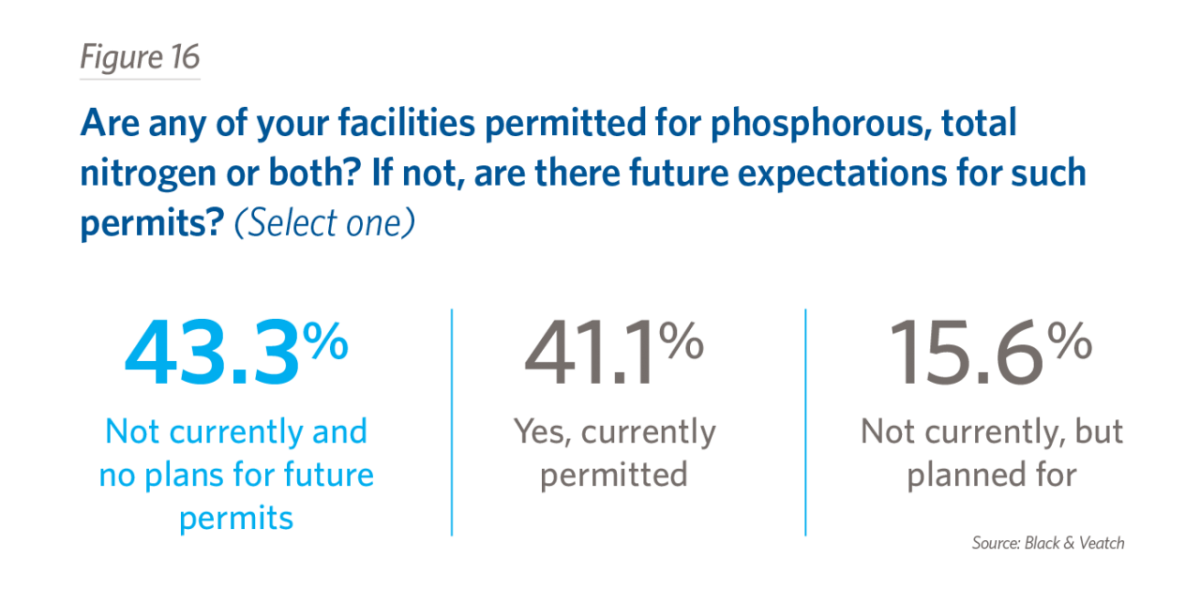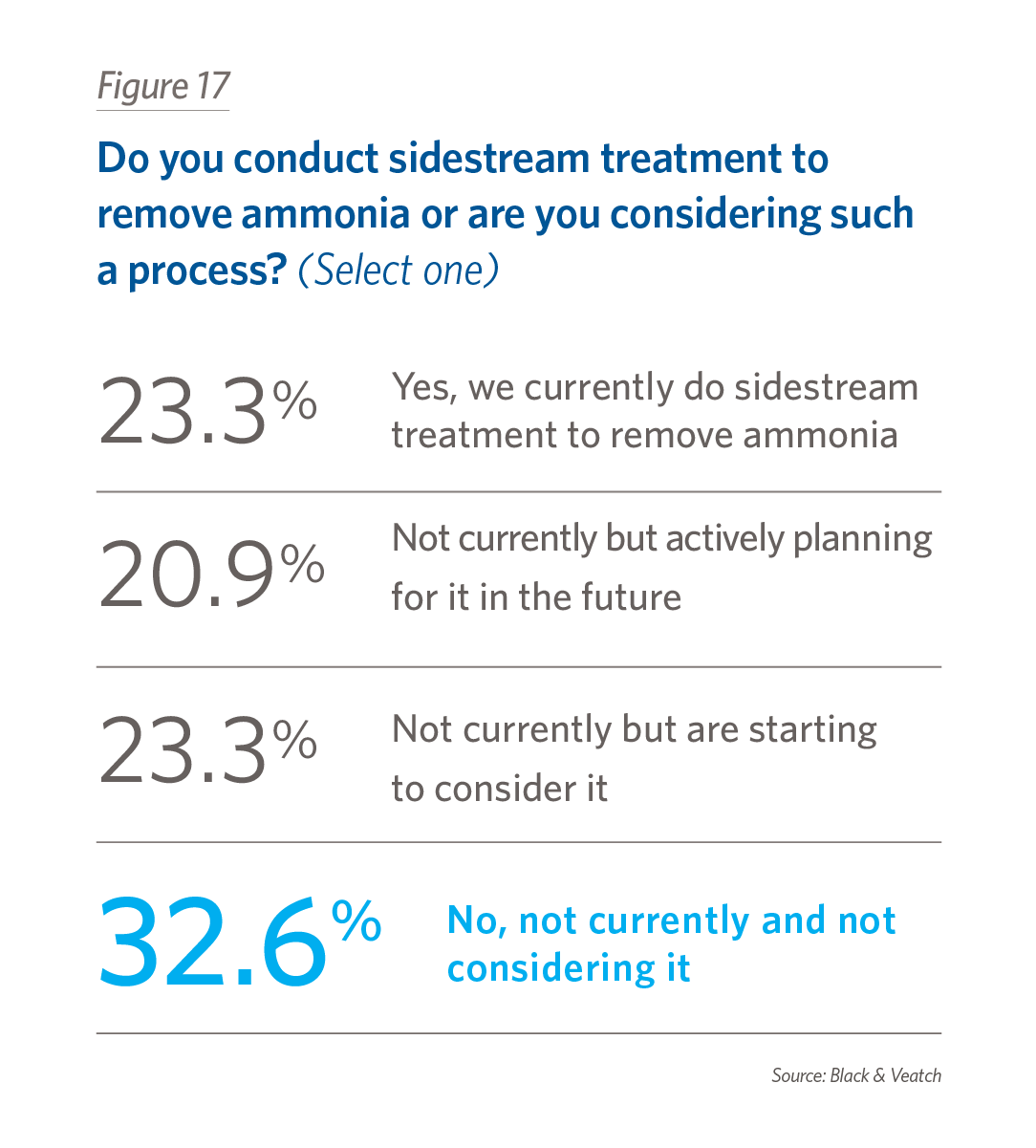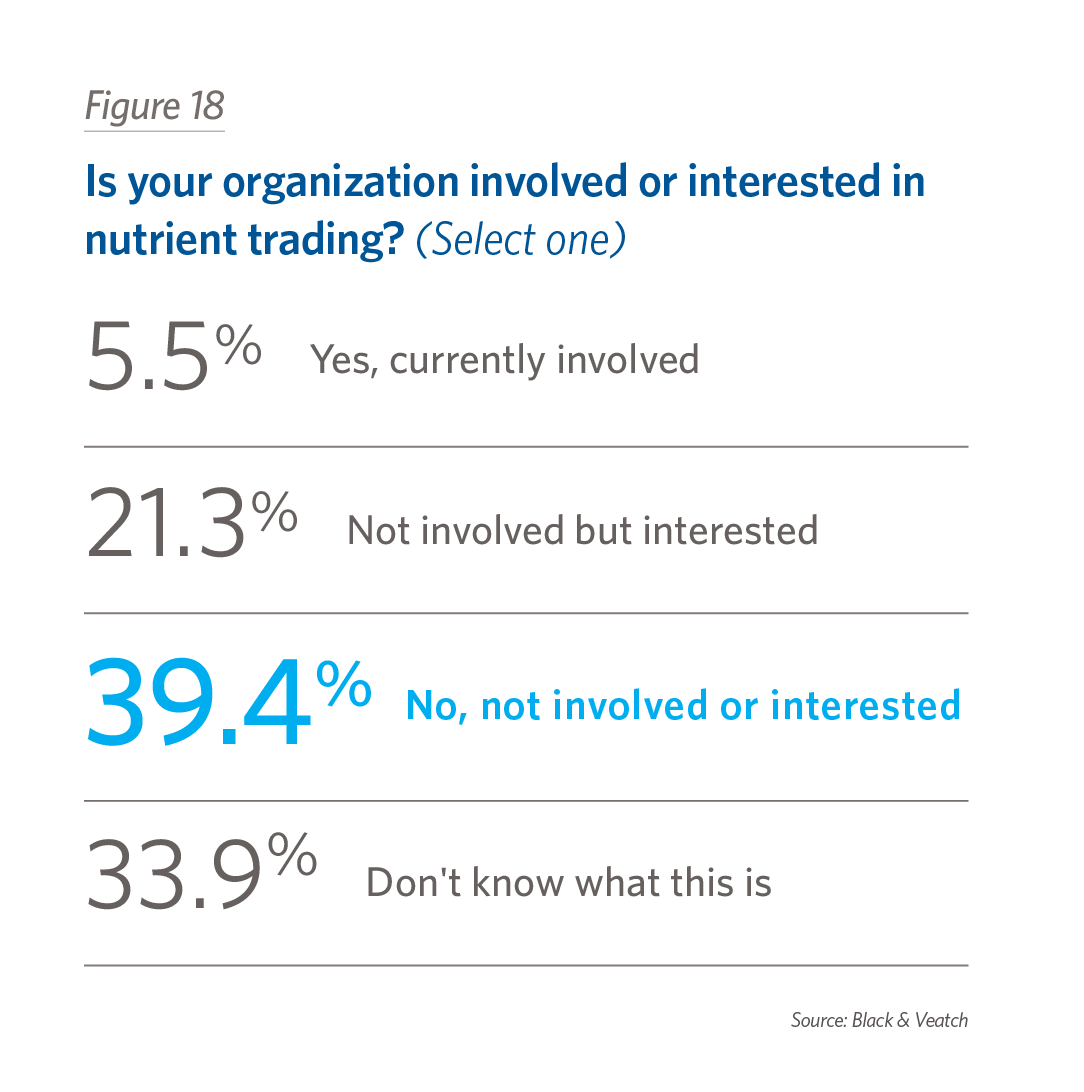Technology, Trading Offer Opportunity for Managing Nutrient Discharge
Efforts to reduce nutrient levels are shifting and becoming more widespread as water and wastewater utilities work to improve effluent and adhere to regulations
Nutrient pollution and the resulting excess of nutrients in waterbodies continues to plague aquatic environments around the world, threatening waterways, fish and plant life — and even public health. The runoff of phosphate and nitrogen from farming, stormwater, wastewater treatment plant discharges and other sources into waterbodies continues to unbalance ecosystems, resulting in toxic algal blooms and hypoxic dead zones.
The issue isn’t bound by state lines. Rivers and estuaries carry these nutrients across the country, impacting communities from the Great Lakes to the Mississippi River Basin and Chesapeake Bay. Although the issue is not a new one, efforts to reduce nutrient levels are shifting and becoming more widespread as water and wastewater utilities work to improve effluent quality and meet regulatory requirements.
Download the full 2019 Water Report
Nutrient Management Solutions
According to Black & Veatch’s 2019 Strategic Directions: Water Report survey, a combined 57 percent of respondents either already have permitted their facilities for phosphorus, nitrogen, or both, or expect to be permitted in the near future. In other words, more than half of the respondents are either addressing nutrient issues or will be soon. Nearly four of every 10 respondents (39 percent) have facilities that include anaerobic digestion, which results in a concentrated return flow with significant nutrient loading. Sidestream treatment offers an opportunity to recover the nutrients for these facilities. Although not overly common, sidestream treatment is improving steadily, driven by the introduction of technology based on new bacteria — and new ways to harness that bacteria — that are making it more economical and cost-effective.
These various nitrogen removal technologies include bioaugmentation (BABE, InNitri), nitritation/denitritation (DigestivorePAD, SHARON) and nitritation/deammonification (ANNAMOX, DEMON, ANITA Mox). Because it uses less oxygen and does not require organic carbon, deammonification is often the most energy-efficient and carbon-efficient way to remove nitrogen. Survey results show that nearly one-quarter of respondents currently use sidestream treatment, roughly 20 percent are planning to do so, and nearly one-quarter are considering the process.
Black & Veatch has deep experience with deammonification technology. In 2014, the company designed the world’s largest DEMON treatment facility for DC Water’s Blue Plains Advanced Wastewater Treatment Plant (AWWTP). That facility is the largest of its kind, treating close to 300 million gallons of wastewater per day, with the ability to treat more than 1 billion gallons per day at peak flow. The project helped DC Water meet regulatory requirements, and it will help reduce nutrient levels in Chesapeake Bay by removing ammonia-nitrogen from the filtrate sidestream generated by the final dewatering facility. The facility offers additional efficiency, saving the client approximately $500,000 per month when in full operation.
Several nutrient management technologies also exist to recover phosphorous. Among them are Ostara, which also recovers struvite, and ion exchange, which can be retrofitted on the end of an effluent stream. Newer technologies that rely on algal treatment are also being explored. Nineteen percent of survey respondents currently recover phosphorous, 17 percent are planning to do so, and 24 percent are considering it.
The Metropolitan Water Reclamation District of Greater Chicago turned to Black & Veatch — with its decades of experience in phosphorus recovery — to design and build the world’s largest nutrient recovery facility at the Stickney Water Reclamation Plant (WRP). The facility uses three Ostara Pearl 10000 reactors to recover more than 85 percent of its phosphorus and up to 15 percent of its nitrogen, converting them into market-ready fertilizers. In 2017, the Water Environment Federation (WEF) awarded a WEF Project Excellence Award to the Stickney WRP Nutrient Recovery Facility.
Revisiting Nutrient Trading
Once a fringe idea, nutrient trading is slowly gaining steam, particularly in regions such as the Chesapeake Bay and the Mississippi River Basin where pointsource reduction technology has reached its limits. Nutrient trading allows facilities that reduce their discharge pollution below the legal limits to sell their surplus reductions as “credits” to other entities. This approach makes economic sense in that it allows facilities that can reduce nutrients at a low cost to sell credits to those facing high-cost reduction upgrades, helping them meet requirements.
Although several states have put nutrient trading programs in place, actual use has been limited, according to a U.S. Government Accountability Office report issued in 2017. The report found that in 2014, 11 states had 19 nutrient credit trading programs, though most of the trading occurred in just three states – Connecticut, Pennsylvania and Virginia. Historically, the level of effort involved in making nutrient trading a reality has been restrictive. But this appears to be changing; survey data shows that although 6 percent use nutrient trading, roughly one in five respondents expressed interest in it.
Perhaps more intriguing is that one-third of participants responded they do not know what nutrient trading is, which suggests a need to educate the industry on the practice to help organizations understand their options.
Organizations that manage impaired waterbodies such as the Chesapeake Bay, Mississippi River Basin, Big Bureau Creek Watershed in heavily agricultural north-central Illinois, California’s Laguna de Santa Rosa Watershed and North Carolina’s Tar-Pamlico estuary, Jordan Lake and Falls Lake are investigating nutrient trading, and we expect to see it play a larger role in the next three to five years as states dig deeper into nutrient regulation.
Data’s Role in Nutrient Removal
The introduction of Big Data, which is disrupting various sectors throughout the economy, may also offer solutions when it comes to managing nutrient flows. The fourth largest river in the world, the Mississippi River, drains all or part of 31 states into the Gulf of Mexico. This massive tributary carries nutrients into the Gulf, resulting in a giant hypoxic zone roughly the size of Connecticut.
In 2015, the U.S. Geological Survey (USGS) partnered with the Illinois Environmental Protection Agency (IEPA) to run a pilot program to assess the levels of nutrients being carried out of Illinois. The program involved installing a regional network of analyzers known as “supergauges” – advanced gauge stations that continuously monitor and analyze streamflow and nutrient data. Powered by solar energy and integrated with cellular and satellite modems, these supergauges make the data available in real-time.
Monitoring and analyzing the nutrient data from this regional network of supergauges will allow the USGS and EPA to test the viability of deploying a comprehensive nutrient monitoring network for the entire Mississippi River Valley, introducing a new way to better understand how to protect waterways.




